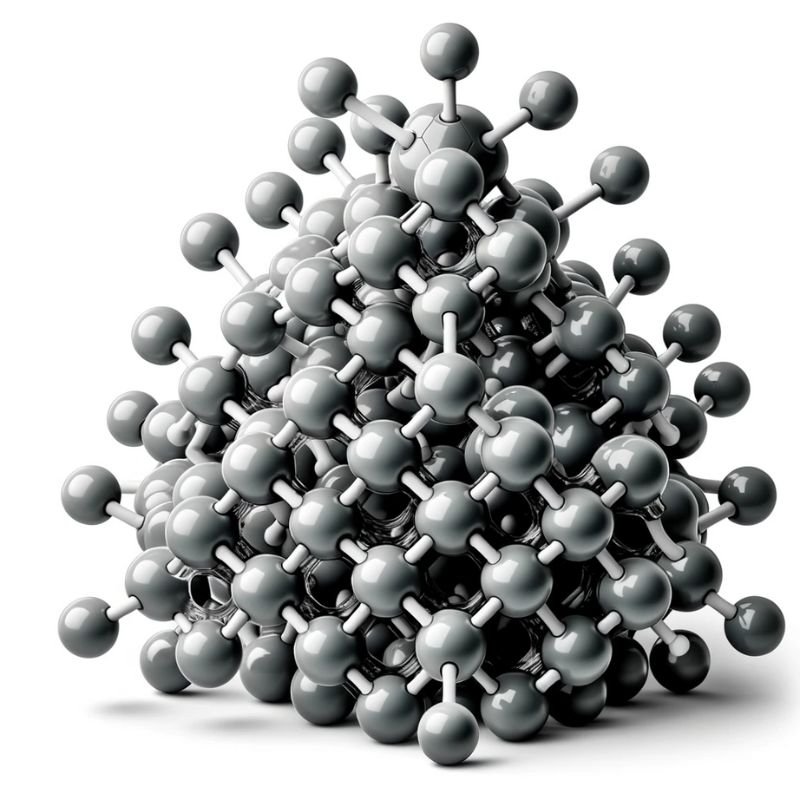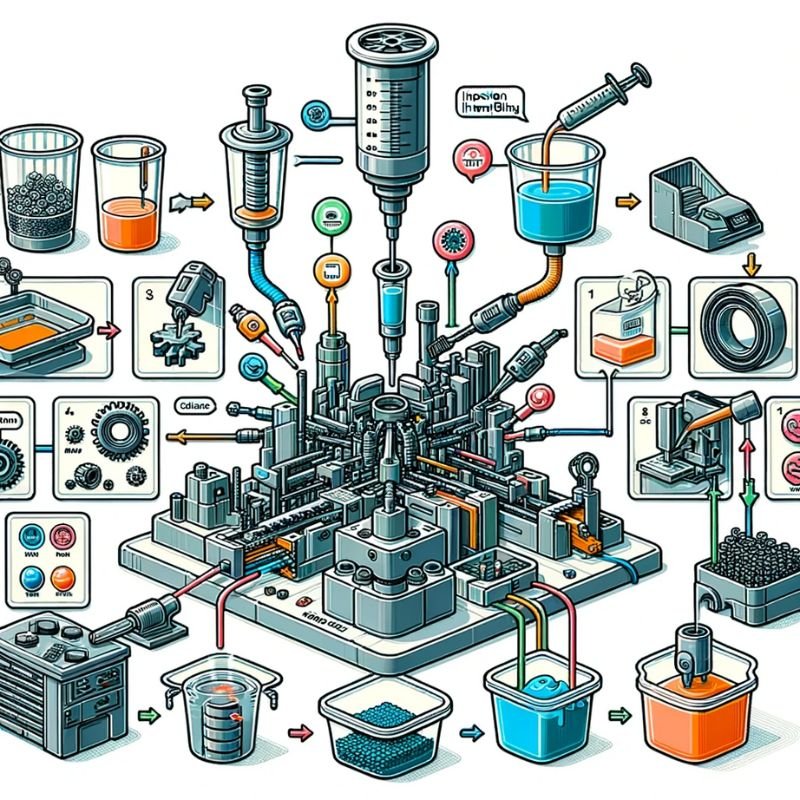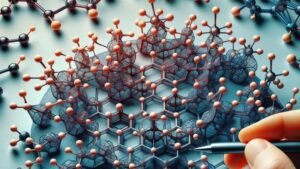Folasaga
Epoxy Resin, ua lauiloa mo lona malosi ma le fegalegaleai, e fetaui lelei ma le faiga o tui tui. A tu'ufa'atasia, e fausia ai se mea palasitika malosi, umi, e fetaui lelei mo le tele o fa'aoga tau alamanuia. O lenei iuni e le gata ina faʻamautinoa le gaosiga o oloa maualuga, faʻaleleia ae faʻafeiloaʻi foi le saʻo ma le faʻatumauina manaoga i vaega eseese. E ala i vaega o loʻo mulimuli mai, o le a matou suʻesuʻeina le malaga mataʻina o le epoxy resin, o ana fegalegaleaiga ma le tui tui, ma faʻamanuiaga mataʻina e aumaia e lenei fesoʻotaʻiga i le laufanua gaosiga faʻaonapo nei.
Fa'asolopito Fa'aaogaina ole Epoxy Resin
O a'a o le epoxy resin e toe fo'i i tua i le 1930s, fa'atasi ai ma le fa'aogaina iloga o lo'o fuga mai i le 1940s mo fa'ama'i nifo ona o le saogalemu o feso'ota'iga ma masini tagata. O lana faigamalaga na faʻateleina i vaega e pei o vaalele, taʻavale, ma faufale, ona o le lelei o mea faʻapipiʻi ma le faʻafefe. O se osofa'iga tele o lona fa'aogaina lea i le va'alele mo le gaosia o vaega va'alele mama ma malolosi. I le aluga o le tele o tausaga, o loʻo faʻaauau pea ona faʻalauteleina le faʻaogaina o le resini epoxy, maua lona tulaga i le tele o talosaga, faʻavaeina se faavae mautu mo lona soʻotaga faʻatasi ma tekinolosi faʻapipiʻiina.

Le Kemisi i Tua o Epoxy Resin
Epoxy resin e ta'uta'ua ona o ona uiga mata'utia, ma o le fa'aai'aga e tele lava ina alu i lona fausaga fa'a-kemikolo tulaga ese. I le fatu o le epoxy resin o loʻo i ai se polymer thermosetting, e iloga i ona filifili mole mole fesoʻotaʻi. O se suʻesuʻega faigofie lea i le kemisi e faʻamalosia ai le resin epoxy.
Fa'atonuga mole
Epoxy resin e aofia ai molelaula ma se vaega epoxide, o se fausaga mama mama. O le i ai o lenei vaega o le epoxide e taua tele aua e mafai ai e le resin ona tali atu i vailaʻau faʻamalolo eseese poʻo faʻamaʻa, faʻafaigofieina se faʻagasologa o fesoʻotaʻiga o le maatulimanu o le malosi o le epoxy resin.
Le Fa'agasologa Feso'ota'i
Pe a fegalegaleai le resini epoxy ma se mea faʻamaʻa, e oʻo mai se gaioiga faʻamaʻi, e taʻitaʻia ai le faʻavaeina o fusi faʻatasi i le va o filifili mole o mea uma e lua. O lenei fa'agasologa o feso'ota'iga e fa'aliliuina ai le vai epoxy resin ma le fa'afefiloi fa'ama'a'a i se mea mautu ma le fa'afefeteina. O feso'ota'iga feso'ota'i fa'atupu e maua ai le resini epoxy ma lona uiga malosi, ma'a'a'a, ma le tete'e atu i mea tau si'osi'omaga.
Meatotino Tunable
O se itu iloga o le kemisi o le epoxy resin o lona faʻaogaina. E ala i le fesuiaiga o ituaiga ma vaega o resini ma mea faʻamalosi, poʻo le faʻaofiina o mea faʻaopoopo, o mea faʻainisinia ma vevela o mea e maua mai e mafai ona faʻaleleia lelei. O lenei agava'a e tatalaina ai le tele o avanoa, e mafai ai e le epoxy resin ona fa'afetaui i mana'oga fa'apitoa i fa'aoga eseese.

Epoxy Resin i le tui tui
O le faʻafeiloaʻiga o le epoxy resin ma le tui tui e faʻaalia ai se tuʻufaʻatasiga o le malosi ma le saʻo, o se faʻafefiloi e faʻaogaina i le fatuina o vaega sili ona umi ma saʻo. O lenei vaega o loʻo faʻaalia ai le faʻagasologa o le tuʻufaʻatasia o le epoxy resin i totonu o tui tui ma faʻamanuiaga e maua mai.
Le Fa'agasologa
I se taamilosaga masani o tui, epoxy resin, faatasi ai ma lona malosi, e fafagaina i totonu o se paelo vevela lea e maua ai se tulaga liusuavai. Ona tui lea o le paluga lea i totonu o se pu i lalo o le mamafa maualuga. A'o fa'amaua le fa'aputuga i totonu o le limu, e amata ai le fa'amalologa, fa'asolosolo mai se vai i se tulaga mautu a'o fa'agasolo le fa'a'asaga o feso'ota'iga. A uma loa ona fofo atoatoa, ona tatalaina lea o le limu, ma o le vaega ua maeʻa ua tuʻu ese, sauni e alu i lana malaga aoga.
Fa'ailo Fa'amanuiaga
Epoxy resin's tryst ma tui tui e le na o se faagasologa; o se faitotoa i se malo o faamanuiaga:
- Fa'aleleia le Tumau: O le kemisi feso'ota'i o le epoxy resin e fa'ameaalofa atu ai oloa fa'amea ma sili atu le tumau. Latou te tutu malosi e tetee atu i le ofuina, pala, ma faigata o le siosiomaga, faʻamautinoaina le umi o le olaga e oʻo lava i tulaga faigata.
- Maualuga Fa'atinoga: O le saʻo saʻo i le tui tui, faʻatasi ma le malosi o le epoxy resin, e maua ai oloa e faʻaalia ai le maualuga o le faʻatinoga. O lo latou gafatia e fa'atumauina le fa'amaoni i lalo o le fa'alavelave e fa'atatau ai mo fa'aoga taua.
- Tau-Tauleleia: E ui o le tau i luga e foliga mai e tele, o le tau umi o le tau e mataʻina. O le umi o le ola ma le maualalo o le tausiga o oloa epoxy resin e faʻafefe ai tupe faʻaalu muamua, ma avea ai ma se filifiliga taugofie i le taimi umi.
- Fuafuaga fetuutuunai: O le fetuutuunai o meatotino a le epoxy resin ma le saʻo o le tui tui e ofoina atu ai le lautele o latitude mamanu. O lenei fetuutuuna'i e taua tele mo le faʻamalieina o manaʻoga eseese o pisinisi eseese, mai taʻavale i mea tau eletise.
Fa'aaogāga o oloa fa'ameamea epoxy resin
O le fusuaga o le epoxy resin ma tui tui ua saunia le ala mo le tele o talosaga i vaega eseese. O lenei vaega o lo'o fa'amalamalamaina ai le tele o oloa e maua mai i lenei so'otaga, ma pisinisi latou te matua a'afia ai.
| Alamanuia | Fa'ata'ita'iga Fa'atatau |
|---|---|
| Alamanuia | Pisau, paʻu, vaega faʻavae |
| Fa'aeletonika | Encapsulation ma le puipuiga o vaega faaeletonika |
| Ta'avale | Casings, fale, vaega faʻavae |
| Fausia | Fa'apipi'i ma taula elemene fa'avae |
| Aerospace | Fausia vaega mama ae malosi |
| Mea'ai & Meainu | Koneteina tumau ma mea faigaluega |
| Gataifale | Vaega faʻavae, ufiufi puipui |

Faʻaleleia atili i le Epoxy Resin Technology
O le ala o le epoxy resin tekinolosi o se tasi o le evolusione faifaipea, aemaise lava i lona sootaga ma tui tui. O lenei vaega o loʻo faʻamatalaina ai le alualu i luma lata mai o loʻo faʻaleleia ai le fesoʻotaʻiga o le epoxy resin ma le tui tui, e oʻo atu ai i oloa sili atu.
Fa'aleleia Fuafuaga
O tausaga talu ai nei na vaʻaia ai le atinaʻeina o faʻasologa o le epoxy resin e faʻatatau i le faʻaleleia atili o le faʻagasologa ma mea faʻatau oloa. O nei faʻatulagaga e faʻafetaui e faʻamalieina manaʻoga faʻapitoa e pei o le faʻaleleia o le tafe, faʻaitiitia le taimi e togafitia ai, ma le faʻaleleia atili o mea tau masini.
Nanotekonolosi
O le tu'ufa'atasia o le nanotechnology ma le epoxy resin o se oso tele i luma. E ala i le tuʻufaʻatasia o nanoparticles, o mea faʻainisinia, vevela, ma pa puipui o mea faʻapipiʻi epoxy resin e matua faʻaleleia e aunoa ma le faʻafefeteina o tulaga lelei o le epoxy resin.
Gaosi Fa'aopoopo
O le fa'a'ese'esega o le epoxy resin technology fa'atasi ai ma le gaosiga fa'aopoopo po'o le lomitusi 3D o lo'o tatalaina ai auala fou. O lenei fesoʻotaʻiga e mafai ai ona gaosia le lavelave, maualuga-saʻo faʻapipiʻi mo tui tui, faʻaitiitia taimi taʻitaʻia, ma faʻatagaina mo le sili atu ona lavelave mamanu gafatia.
Epoxy Resins gafataulimaina
I se taumafaiga ina ia ogatusa ma sini o le gafataulimaina o le lalolagi, o le atinaʻeina o resini epoxy faʻavae olaola o loʻo maua le malosi. O nei resini e maua mai i punaoa faʻafouina, faʻailogaina se laasaga e faʻaitiitia ai le tulagavae o le epoxy resin gaosiga ma le faʻaogaina.
Smart Epoxy Resins
O le amataina o resini epoxy atamai e mafai ona faʻamaloloina e le tagata lava ia poʻo le suia o meatotino e tali atu ai i faʻaosofia o le siosiomaga o se alualu i luma mataʻina. O nei resini fou o lo'o fa'amauina le folafolaga o le fa'alauteleina o le ola ma le fa'atinoga o oloa gaosia.
Avatu Tekonolosi Fa'agata
O lo'o fa'atupula'ia tekinolosi fa'amālōlōina fou e fa'avavevave ai le fa'amaloloina o le epoxy resin i fa'aoga tui tui. O nei aga'i i luma e taua tele i le fa'aleleia atili o le gaosiga ma le lelei o oloa.

Tulaga Tumau
I se lalolagi ua fa'atupula'ia aga'i i faiga fa'atumauina, o le epoxy resin ma tui tui e le o tuai. O lenei vaega o lo'o fa'amalamalamaina ai a'afiaga o le si'osi'omaga ma aga'i atu i le fa'aauauina i totonu o lenei malo.
| Ituaiga | Fa'amatalaga |
|---|---|
| Aafiaga Faalesiosiomaga | Epoxy resins masani e maua mai petrochemicals o lo'o tula'i mai ai ni lu'itau e lafoa'i. |
| Epoxy Resins fa'aolaola | Epoxy resins e maua mai punaoa fa'afouina e fa'aitiitia ai a'afiaga o le si'osi'omaga. |
| Toe fa'aaogaina mea fou | O metotia toe fa'aaogaina vaila'au e fa'aleleia atili ai le toe fa'aaogaina o oloa epoxy resin. |
| Malosiaga Lelei i le gaosiga | Fa'ata'ita'iga fa'alelei i le tui tui fa'aitiitia le fa'aogaina o le malosi. |
| Fa'aitiitiga o otaota | Fa'atauva'a meafaitino i le tui tui e saofagā i le fa'atumauina. |
| Fa'aopoopo fa'alelei | Tu'ufa'atasia o mea fa'aopoopo e fa'aleleia ai le si'osi'omaga e fa'atatau i manatu tau si'osi'omaga. |
Fa'ai'uga
O le galulue faatasi i le va o le epoxy resin ma le tui tui ua saunia ai le auala mo oloa umi ma maualuga le faatinoga i le tele o vaega. Mai lona amataga fa'asolopito e o'o atu i fa'aoga fa'aonaponei ma aga fa'atumauina fa'agasolo, o lenei feso'ota'iga e fa'aalia ai se malaga mata'ina o mea fou. A'o aga'i i luma tekinolosi, o le so'otaga o le epoxy resin ma le tui tui o lo'o fa'aauau pea ona folafola atu se lumana'i o le fa'aleleia atili o le gaosiga, fa'atosina tuaoi i mea fa'asaienisi a'o fa'aalia se tautinoga malosi i le fa'aleleia o le siosiomaga.





